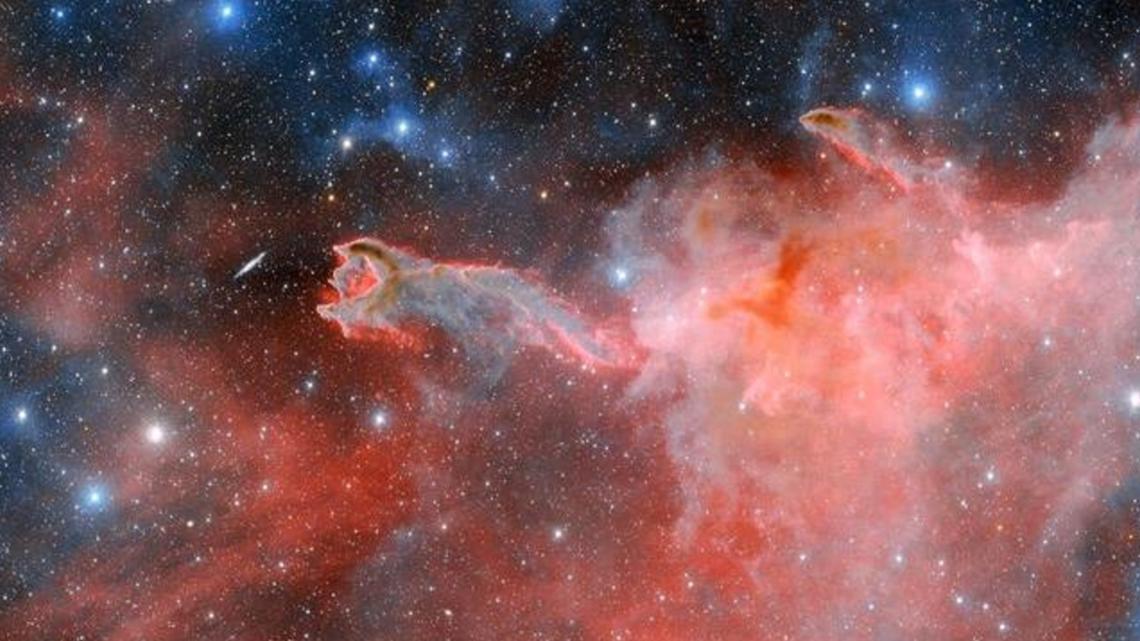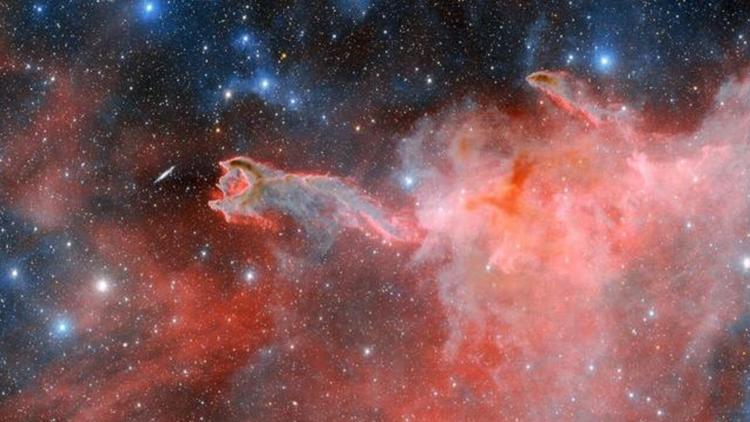NEW YORK — "God's Hand" has been revealed in a stunning new photo. Researchers say the "ghostly" and "ominous" image of the cometary globule in the Milky Way comes as the space object is continuing to be destroyed by radiation from massive stars.
The globule, more formally known as CG 4, sits around 1,300 light-years away in the constellation Puppis. Specifically, it lives in a "huge patch of glowing gas" that the National Optical-Infrared Astronomy Research Laboratory, known as NOIRLab, says is called the Gum Nebula. That nebula, the lab said, is believed to the remains of a million-year-old supernova and is home to dozens of these globules.
The lab released the new image, saying it was captured by a Dark Energy Camera mounted on a telescope.
"A ghostly hand appears to be emerging from the interstellar medium and reaching out into the cosmos," the lab says of the image. "...Its dusty head, which has a diameter of 1.5 light-years, and its long, faint tail, which is about eight light-years long, make CG 4 a comparatively small Bok globule."
The lab says that Bok globules are clouds of cosmic gas and dust that are surrounded by ionized material. When some of that material leaves, it can create the appearance of long tail that resembles a comet, making them known as cometary globules.


What helps the comet become visible for photographing is also what destroys it. The tails of these globules typically block light, but radiation from nearby stars helps with the illumination.
"The intense radiation generated by these neighboring massive stars, however, is gradually destroying the head of the globule and sweeping away the tiny particles that scatter the starlight," the lab said. "Still, the dusty head of CG 4 contains enough gas to feed the active formation of several new, sun-sized stars."


